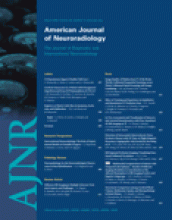Abstract
SUMMARY: The ultimate methodology necessary to adopt a treatment as generally beneficial is the randomized controlled trial, a method designed by and for clinicians to maximize the care of their patients in the presence of uncertainty. Some selection is however necessary to limit trials to more promising and less risky endeavors. Experimental models are the privileged answer to the problem of finding scientific evidence while refraining from harming patients in the course of this pursuit. They allow a step by step assessment, from simple but artificial settings to more complex and realistic animal models. But the use of animal models can only be justified if the community can be convinced that alternatives have been considered but are invalid, when the project is scientifically sound and methodologically irreproachable.
As neurointerventional methods develop and gain wider clinical applications, progress should proceed in an orderly fashion, within limits set by prudence and human values, from the less risky, costly, time consuming methods, to the more definite, pragmatic, labor intensive but inescapable clinical trials. Each step is essential and the sequence cannot be violated without risks of errors that eventually translate into clinical morbidity.
- Copyright © American Society of Neuroradiology












